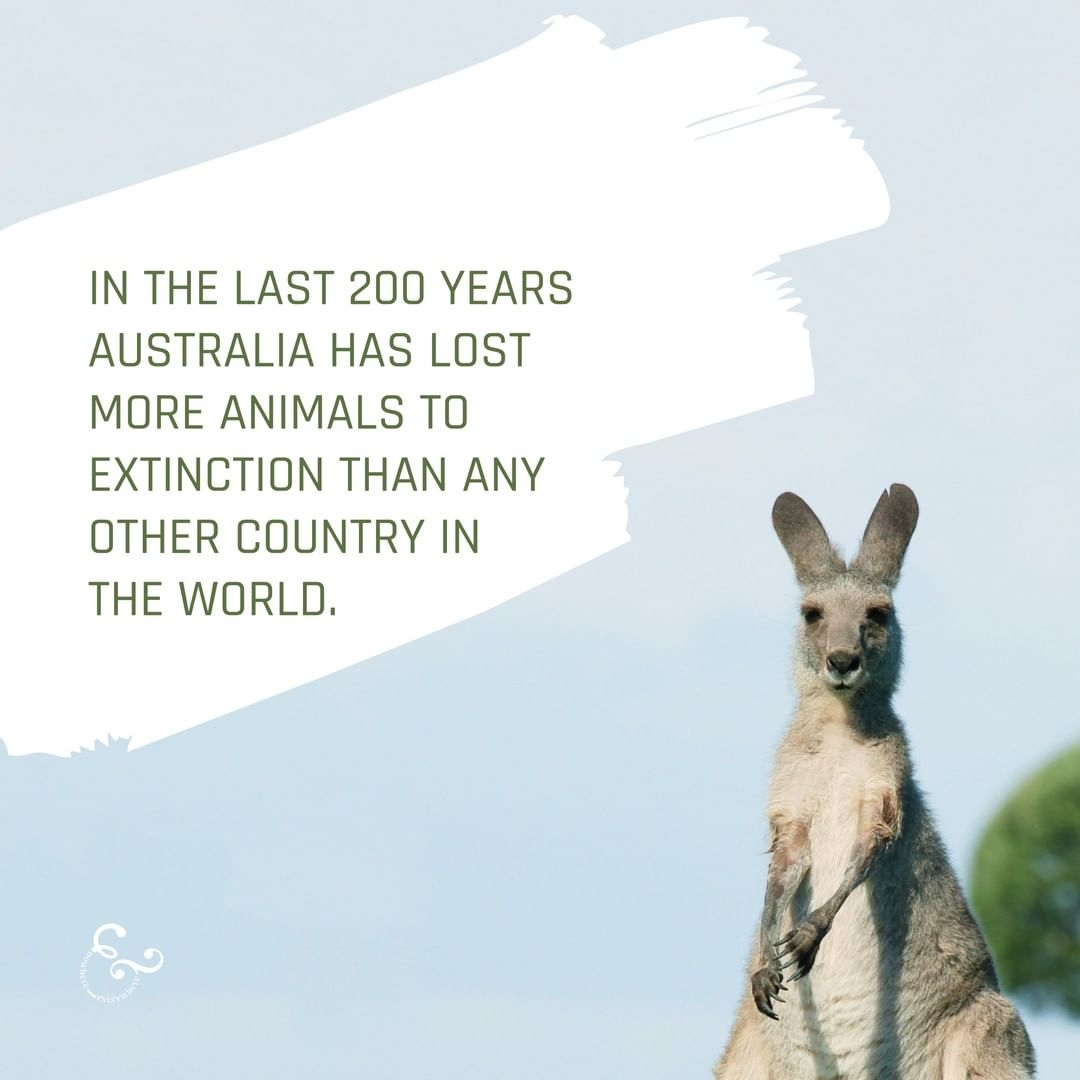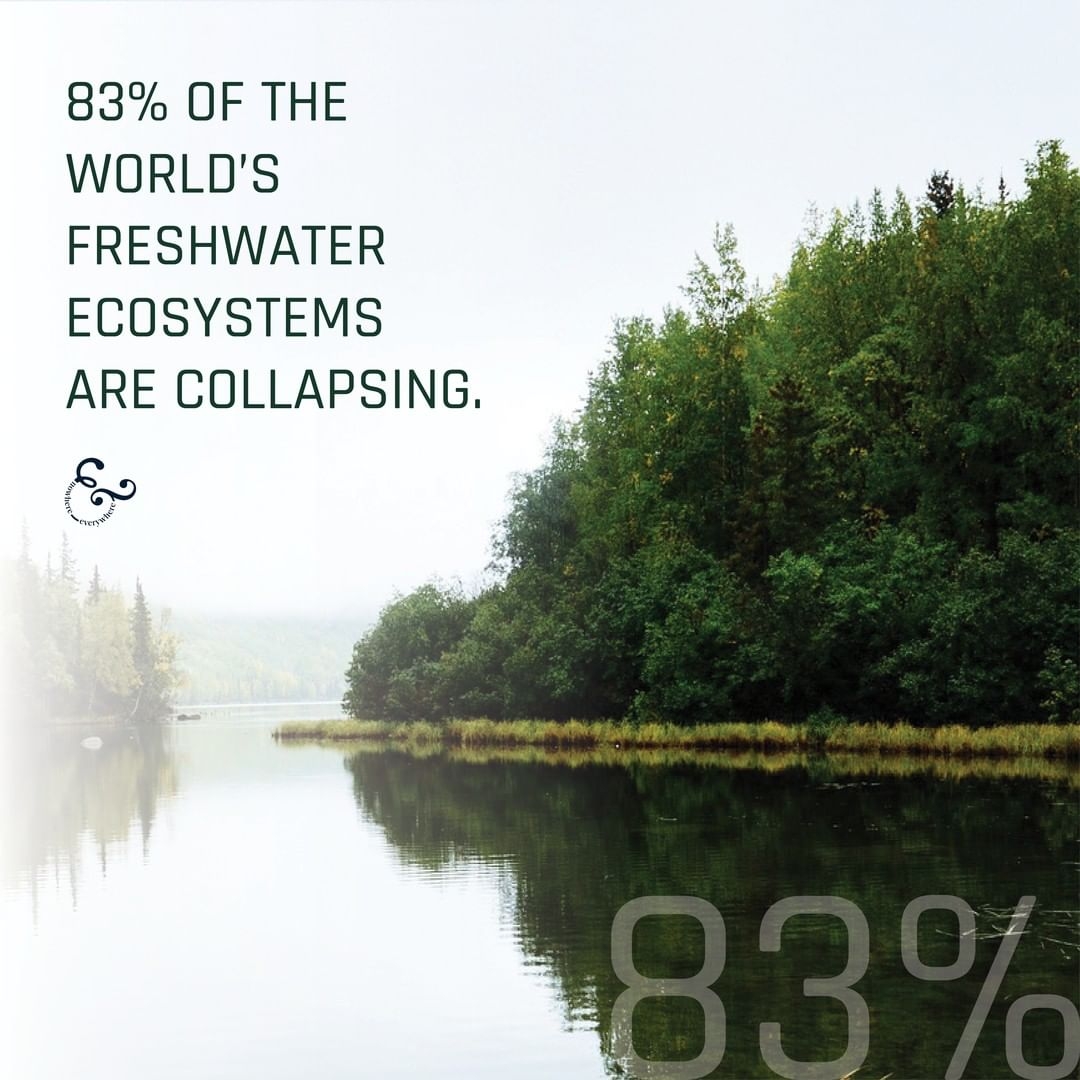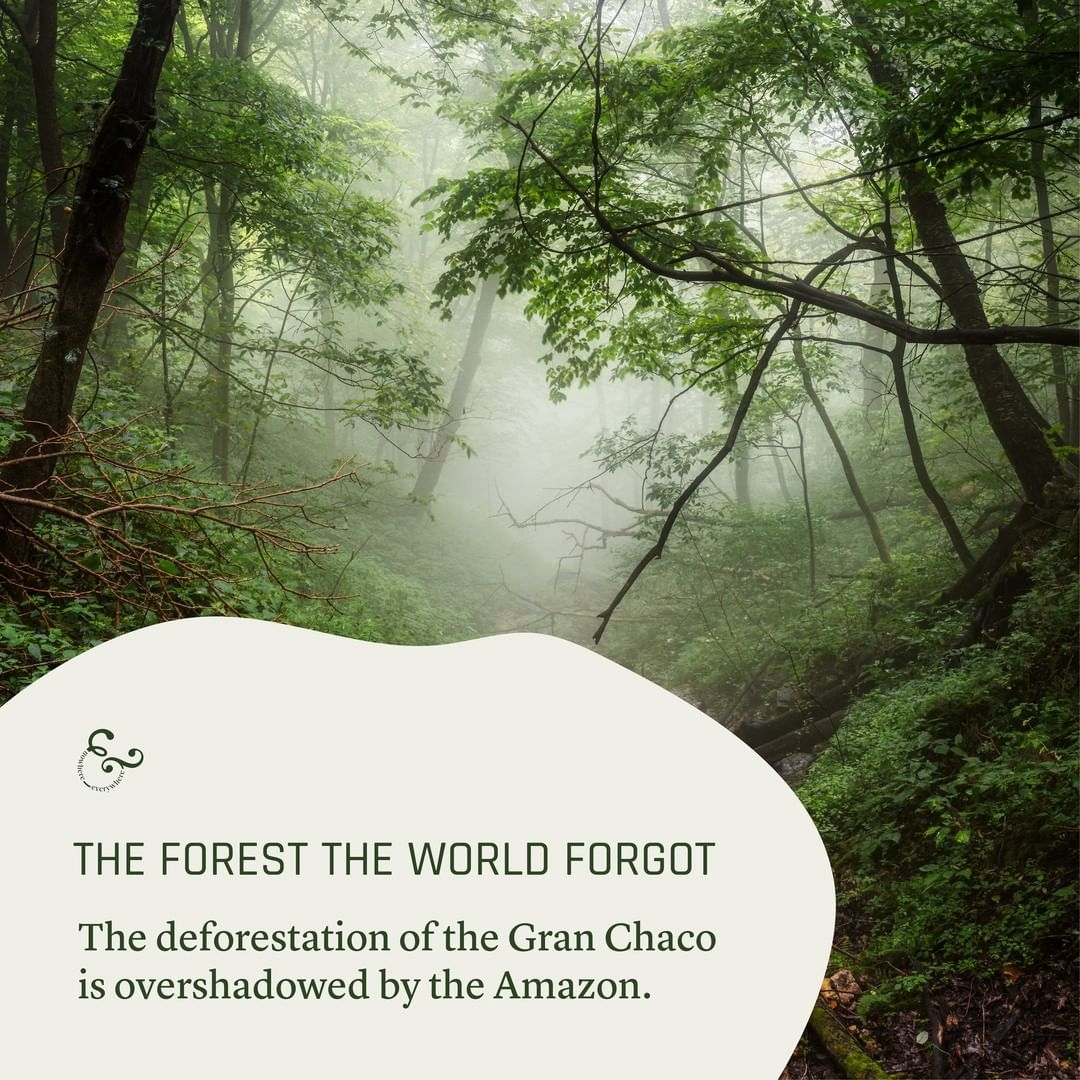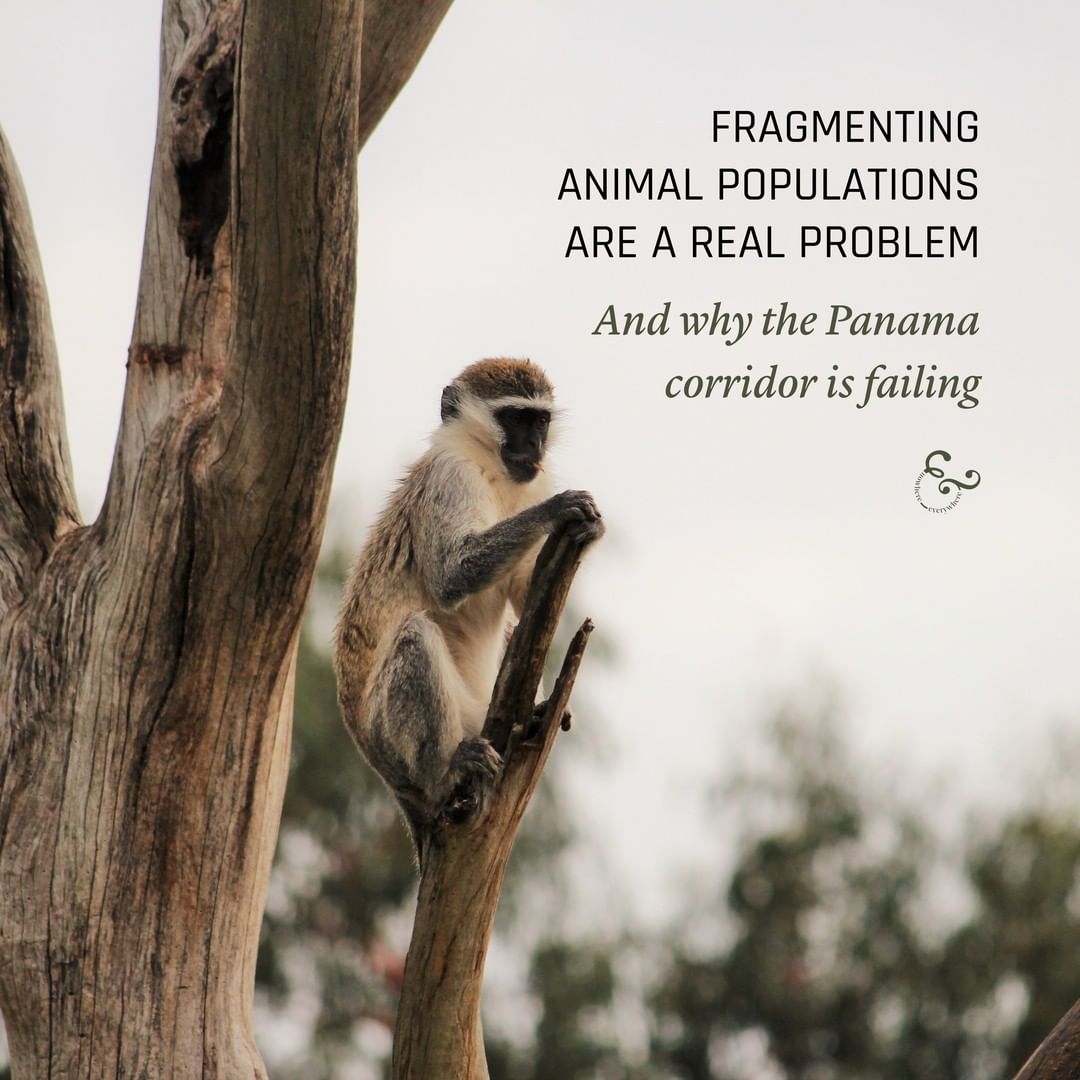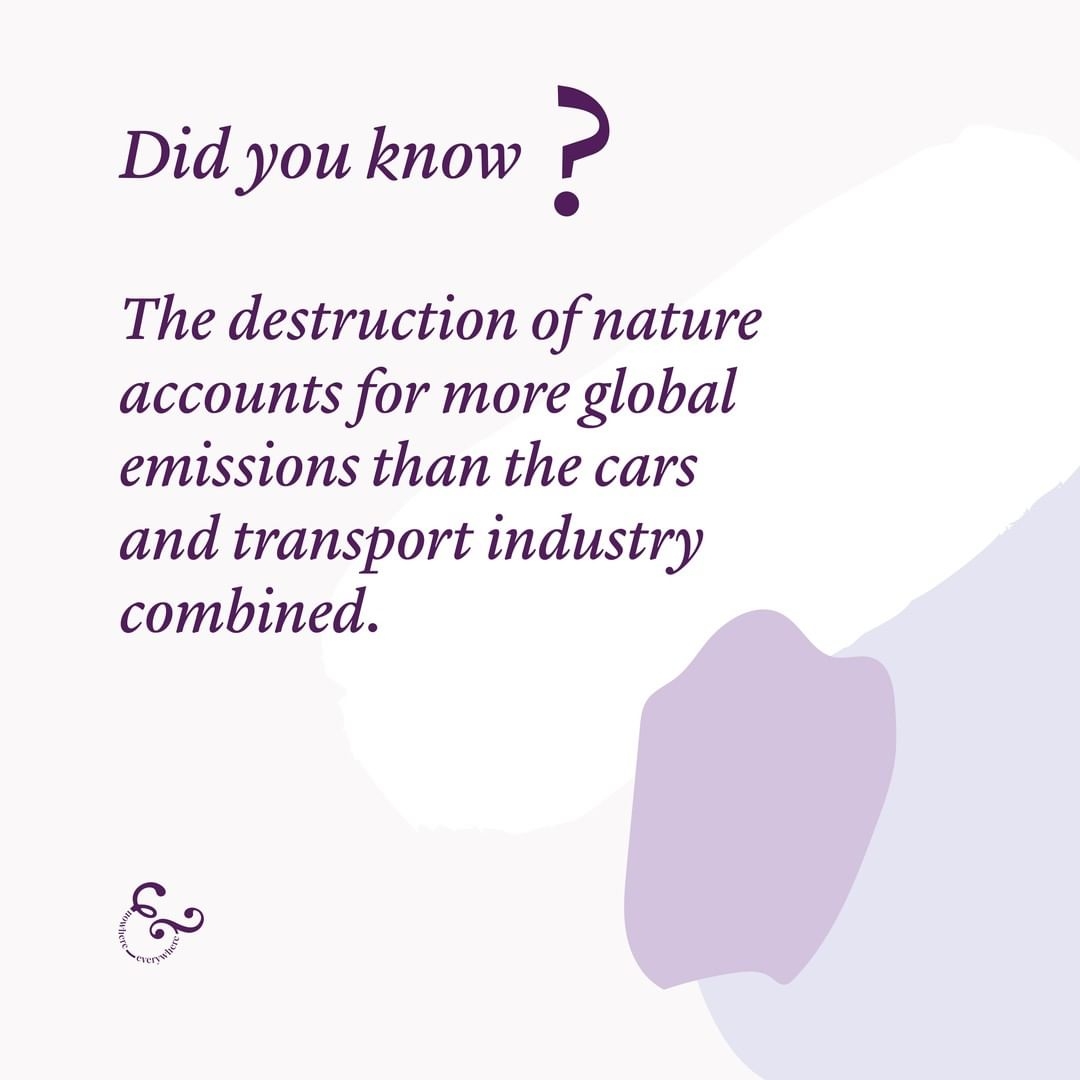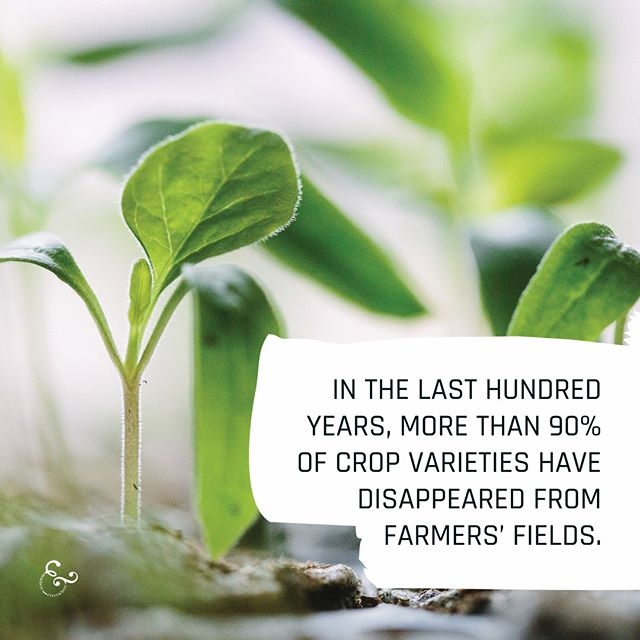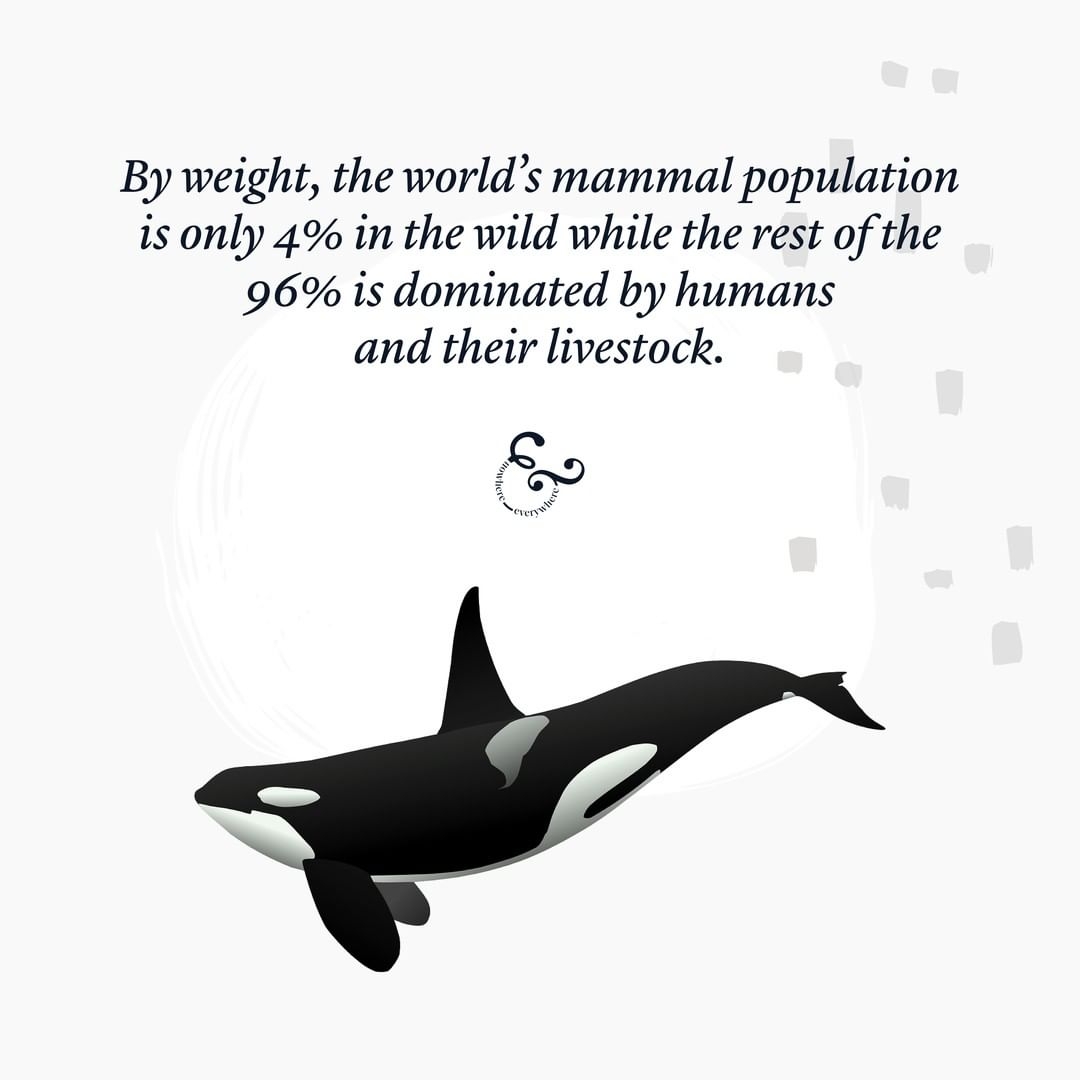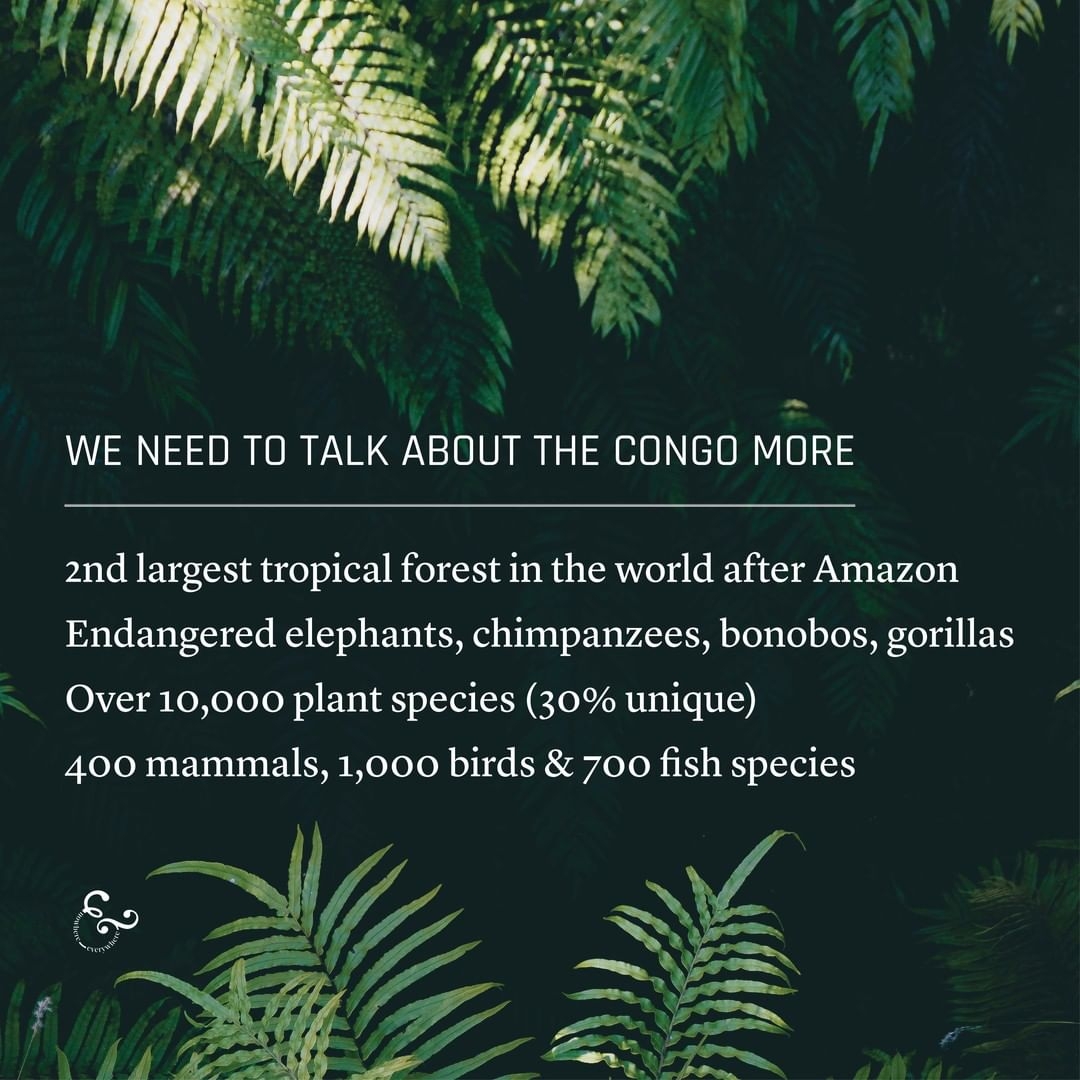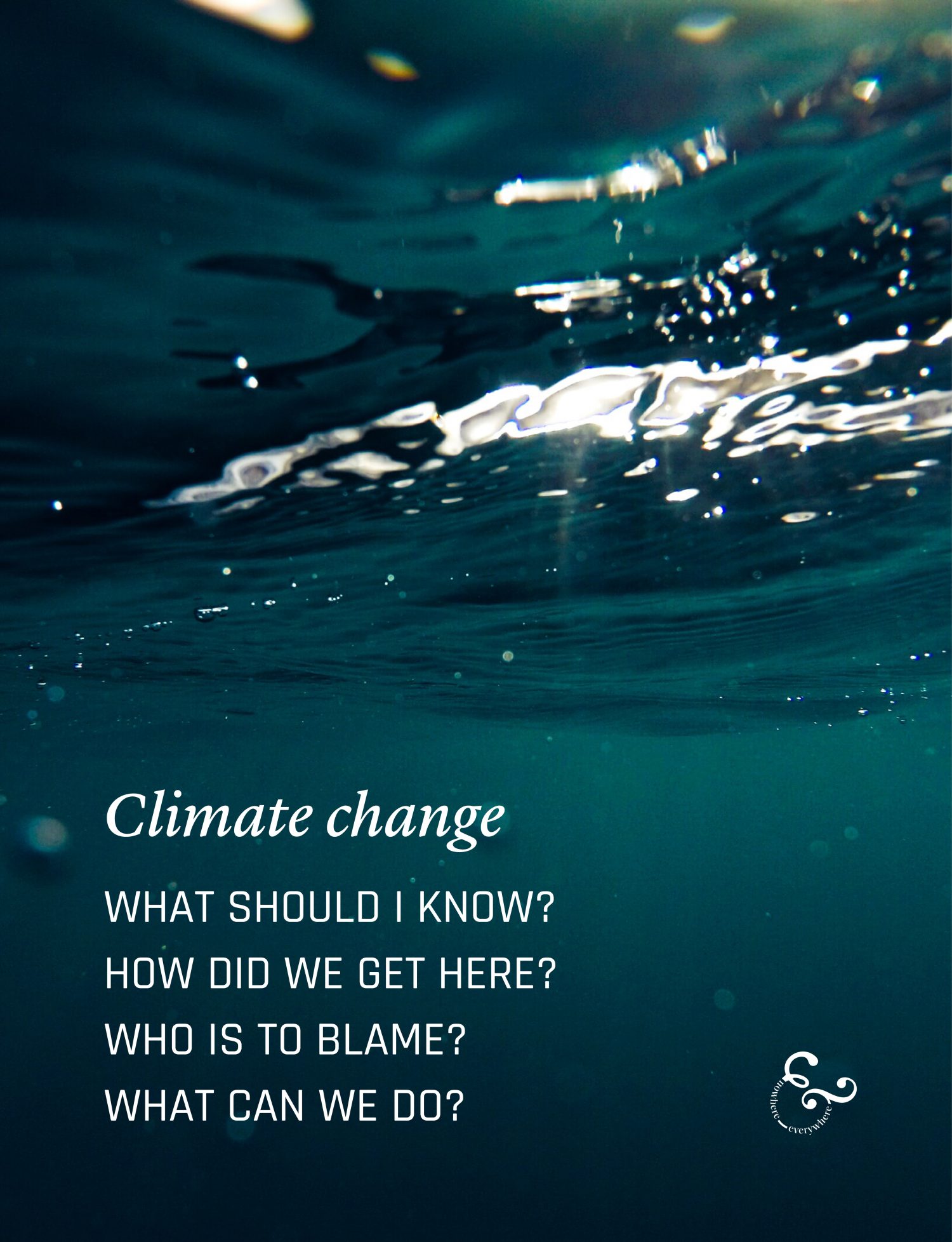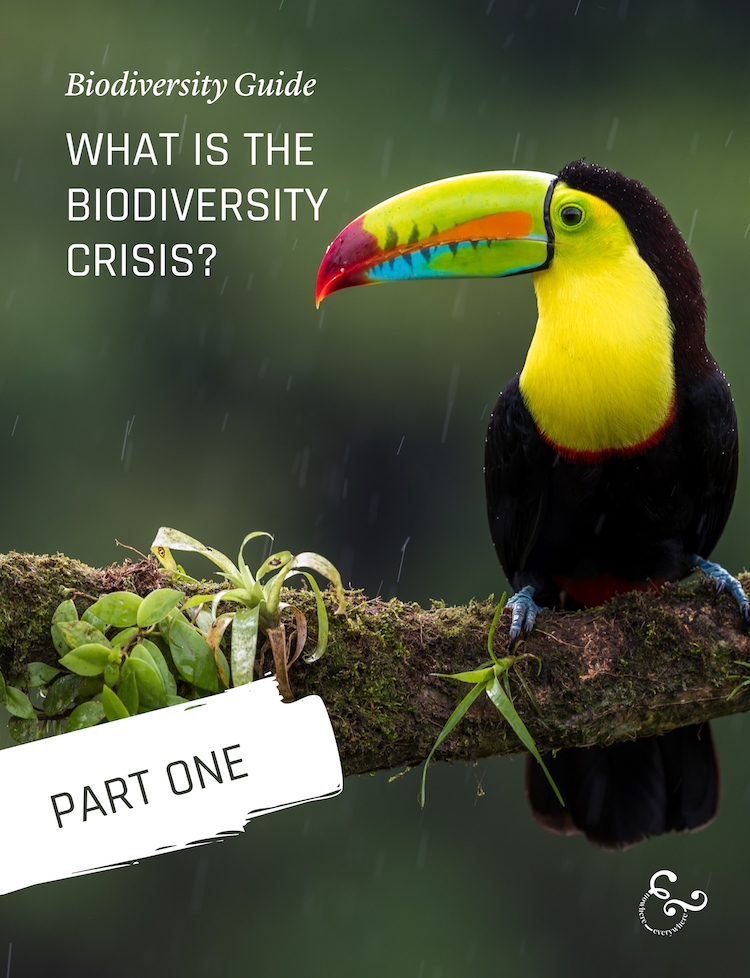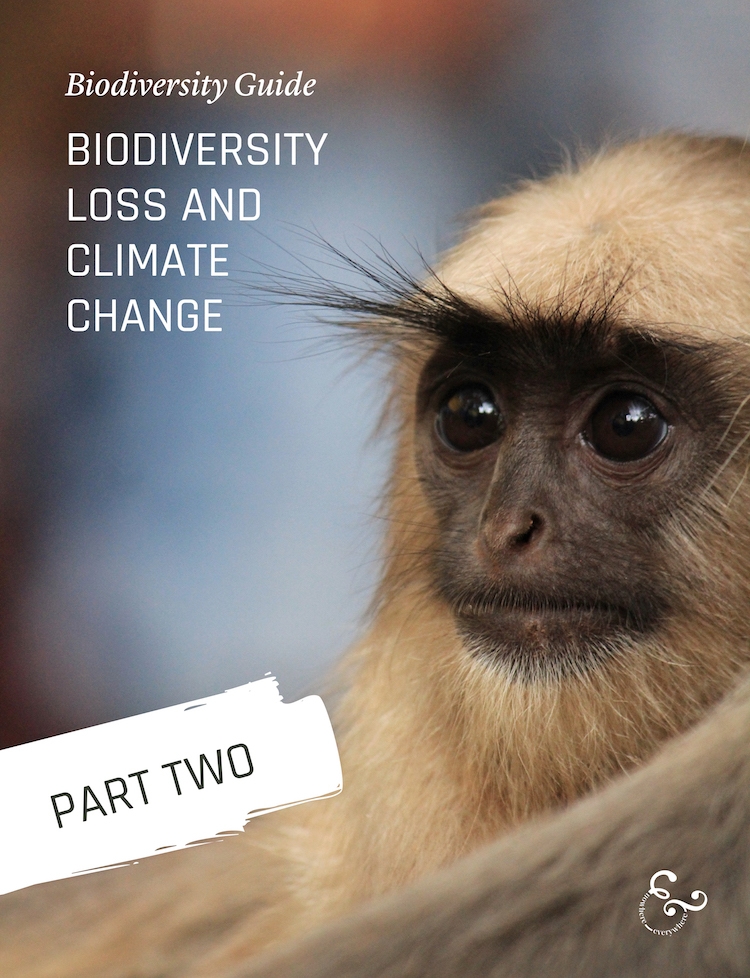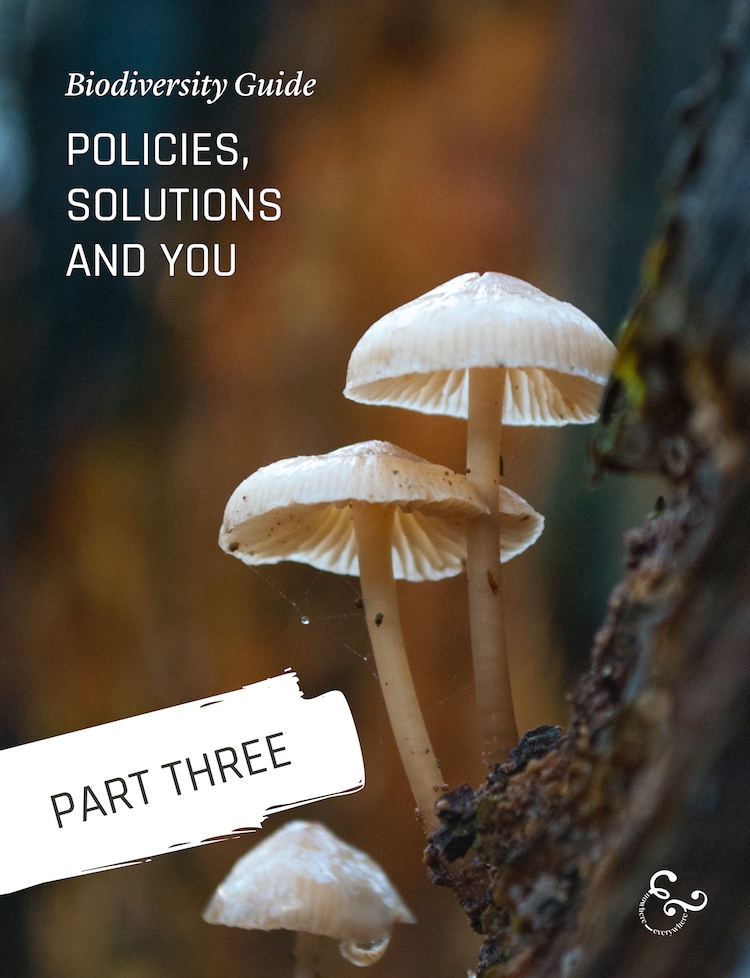Free Guide
Biodiversity and climate change
This is Part Two of our Beginners Guide to Biodiversity. The biodiversity crisis is happening right alongside the climate crisis. Both influence each other and yet we’re often only speaking about one. The biodiversity crisis is under-discussed and misunderstood. In this three part guide we’re digging into what it is, the scope and cause of the crisis, and how we all contribute and can help.
How does climate change exacerbate the impacts and rate of biodiversity loss?
In Part 1 of our Biodiversity Guide, we learned that climate change is not only one of the top five drivers of biodiversity loss, but in fact, makes the other four drivers worse.
“We all face enormous challenges…a lack of resources, invasive species, poaching, and development to name just a few. Now along comes a threat that is bigger than all the previous ones and even interacts with most of them. Climate change is real and is an enormous challenge for us all.” – Kathy MacKinnon & Jonathan B. Jarvis, IUCN Report
A recent story by a team of researchers, highlights just how far reaching the impacts of climate change are. Protected atop a steep 700m fortress of rock in Northern Mozambique, Lico rainforest has remained undisturbed for millennia from the human activities that have devastated much of the country’s unprotected forest (take a look at the photos).
However, despite its isolation, Lico forest is still threatened by human activity that is occurring far beyond the protection of its steep rock walls. The changing climate will cause changes in the precipitation and temperature conditions to which the forest and its species have co-evolved since the end of the last Ice Age. After 10,000 years of relative stability, things are starting to change.
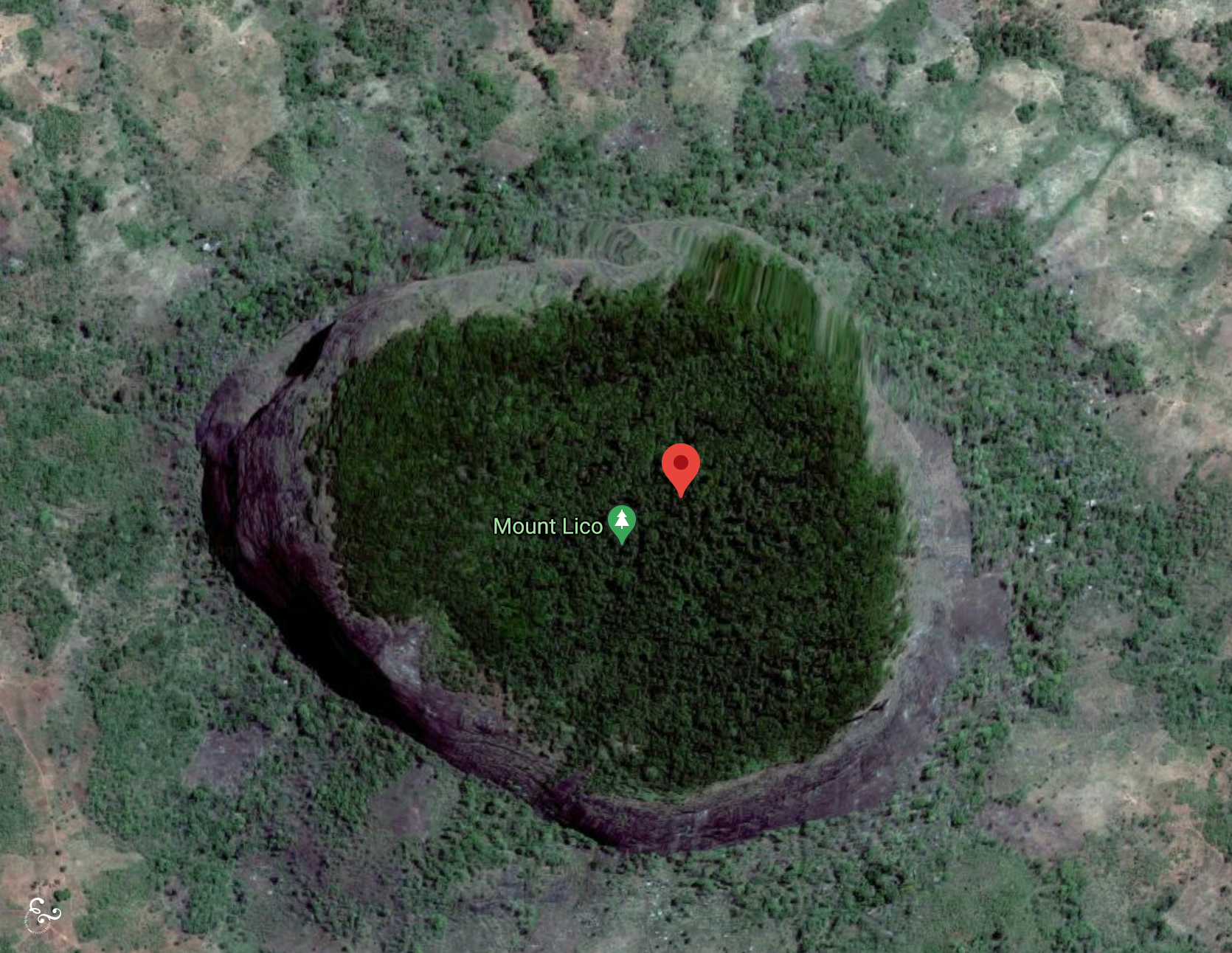
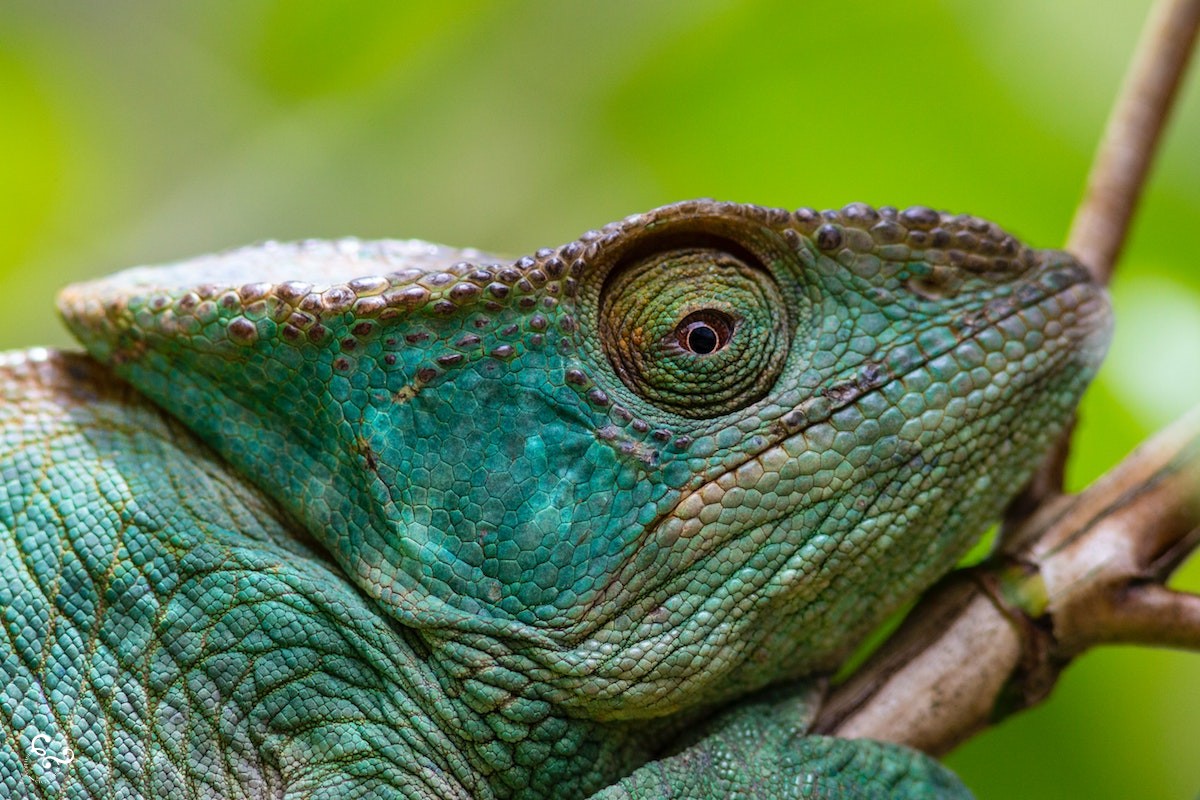
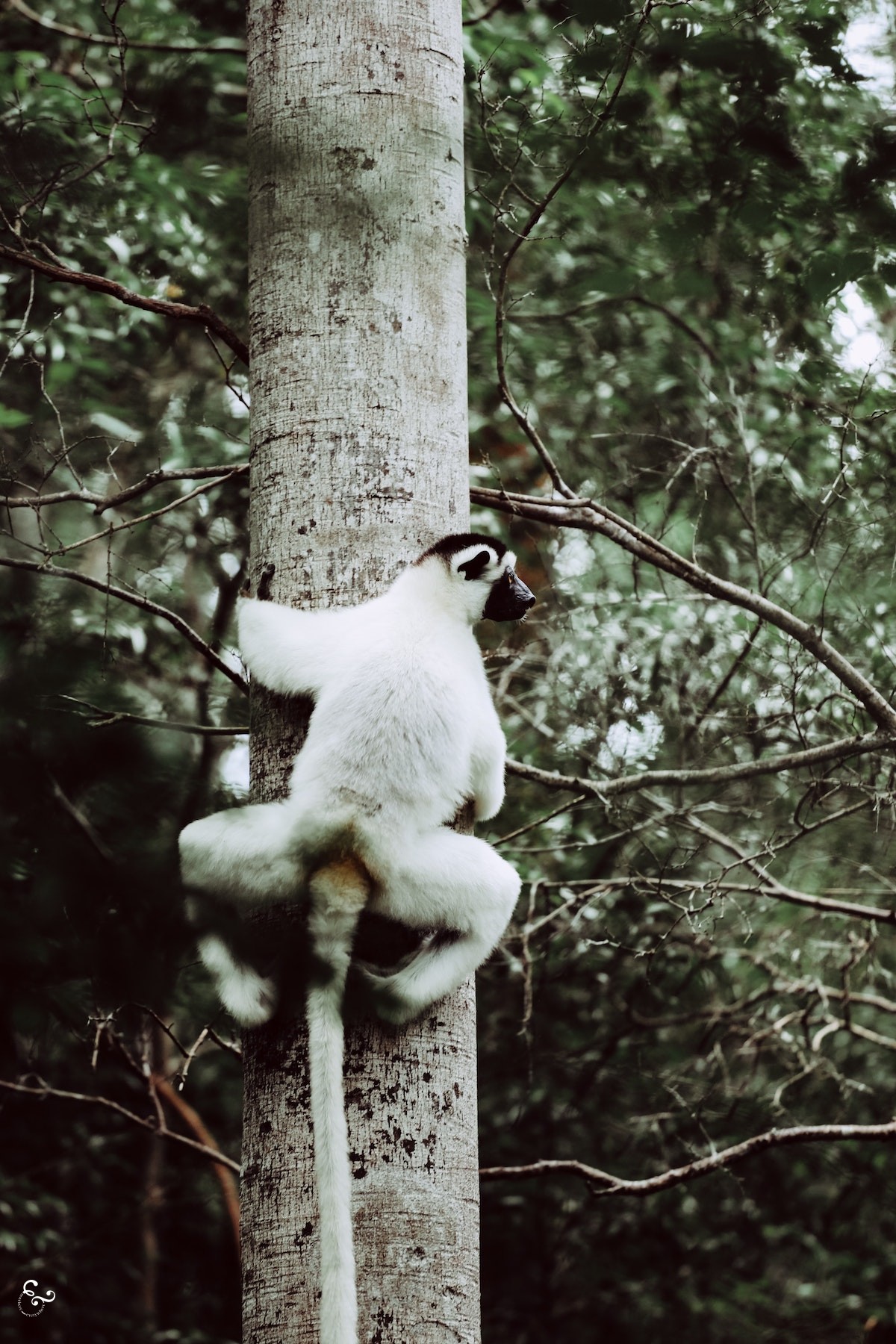
Ecosystems, due to their ability to self-regulate and maintain ‘balance’ are able to withstand stress. However, the cumulative stress from repeated shocks (pulse events) undermines an ecosystem’s resilience. Think of it like when you are highly stressed, and things eventually build up until you reach a breaking point where you can’t keep it together any longer, and you have a breakdown in the shower.
In the same way, press disturbances, like climate change, undermine an ecosystem’s ability to withstand the shocks from ‘pulse’ stressors. Warmer and drier conditions facilitate fire, drought and insect disturbances whilst warmer and wetter conditions increase disturbances from wind and pathogens.
With climate change, the rate of change is important. Changing climate conditions mean that niches (conditions) that species have evolved to live in over the last 10,000 year period are shifting faster than the species can adapt (they can’t just quickly throw on a coat, turn the air conditioning on or move elsewhere).
Pulse = sudden, random event such as a cyclone, flood or fire that disrupt an ecosystem’s health, but are recoverable because of their temporary nature.
Press = long and lasting pressures such as climate change and ocean acidification that have long-term, restructuring impacts on ecosystems.
A pulse event could be thought of like a lung infection (short-term) whereas a press event could be thought of as lung cancer (long term and insidious).
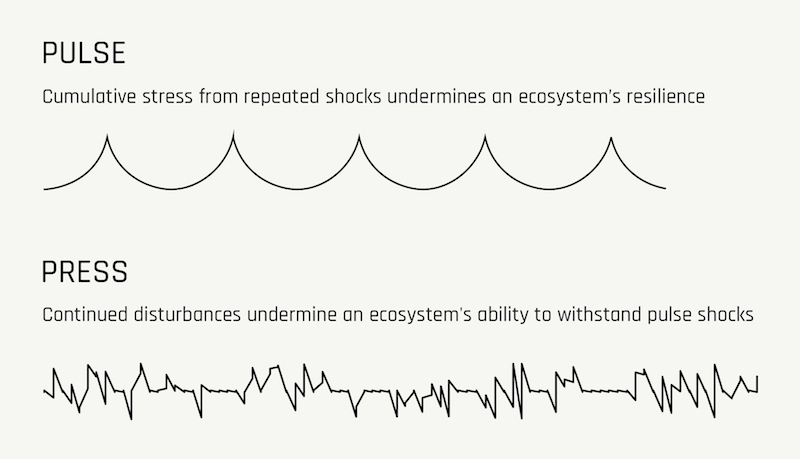
Abrubt ecological disturbance
A recent study, published in Nature, analyzed climate change projections across the geographic ranges of more than 30,000 marine and terrestrial species. In the next few decades, the subtle ‘press’ disturbance of climate change will result in multiple species reaching their temperature limits simultaneously (i.e conditions become unsuitable for multiple species in the same community at the same time), leading to catastrophic die-offs and the abrupt collapse of ecosystems (this is not an exaggeration).
The modelling shows that we are facing the impending risk of sudden and severe biodiversity losses within the next decade in coral reefs in tropical oceans, spreading poleward to affect other ecosystems by 2050. Under current emissions scenarios, over 80% of terrestrial species and 35% of marine species are projected to be exposed to temperatures beyond their climatic niche limits before 2100. In light of these projections, it may be that the IPBES (Intergovernmental Science-Policy Platform on Biodiversity and Ecosystem Services) estimate of 1 million species at risk of extinction, is severely underestimated.
Indeed, a more recent study estimates that one in three of all plant and animal species could face extinction by 2070 under current rates of climate change. If we use IPBES (likely conservative) estimate of 8 million plant and animal species on the planet, then according to this study, closer to 2.6 million species are threatened with extinction due to climate change.
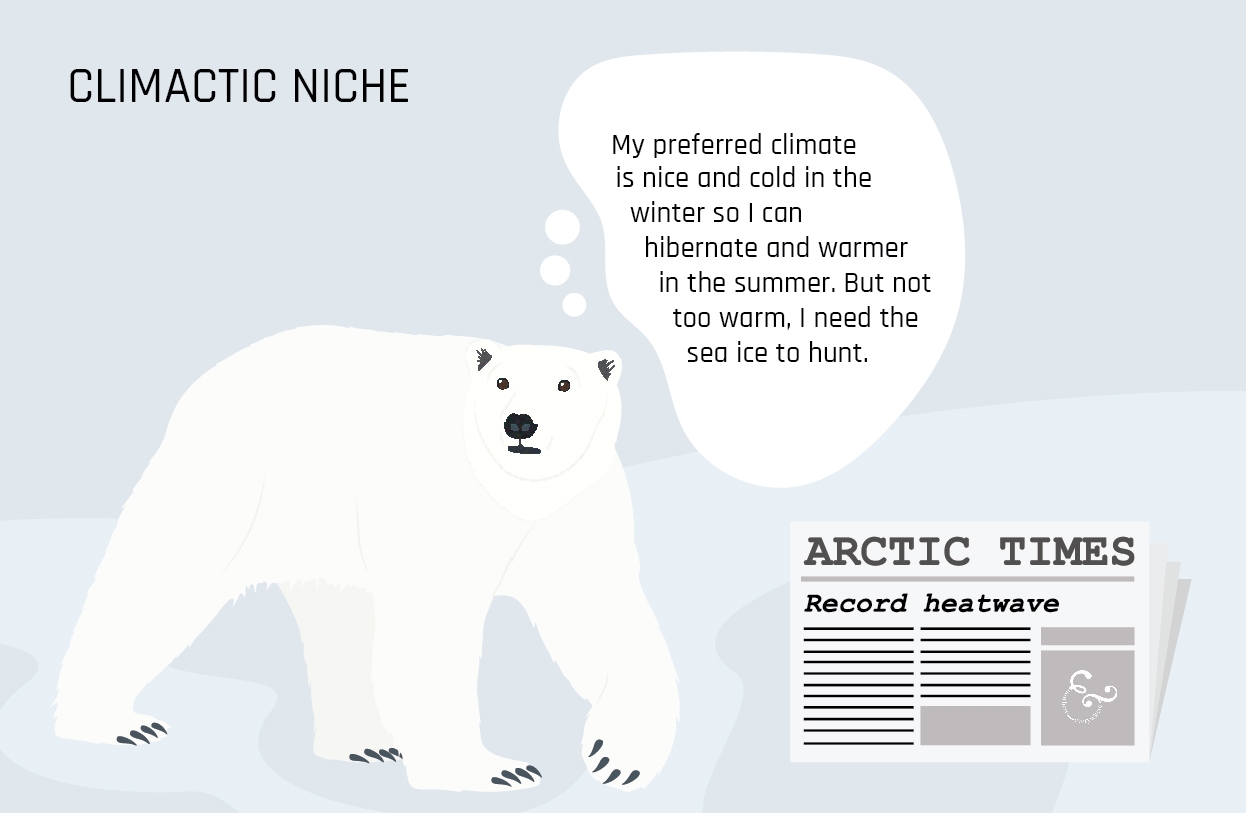
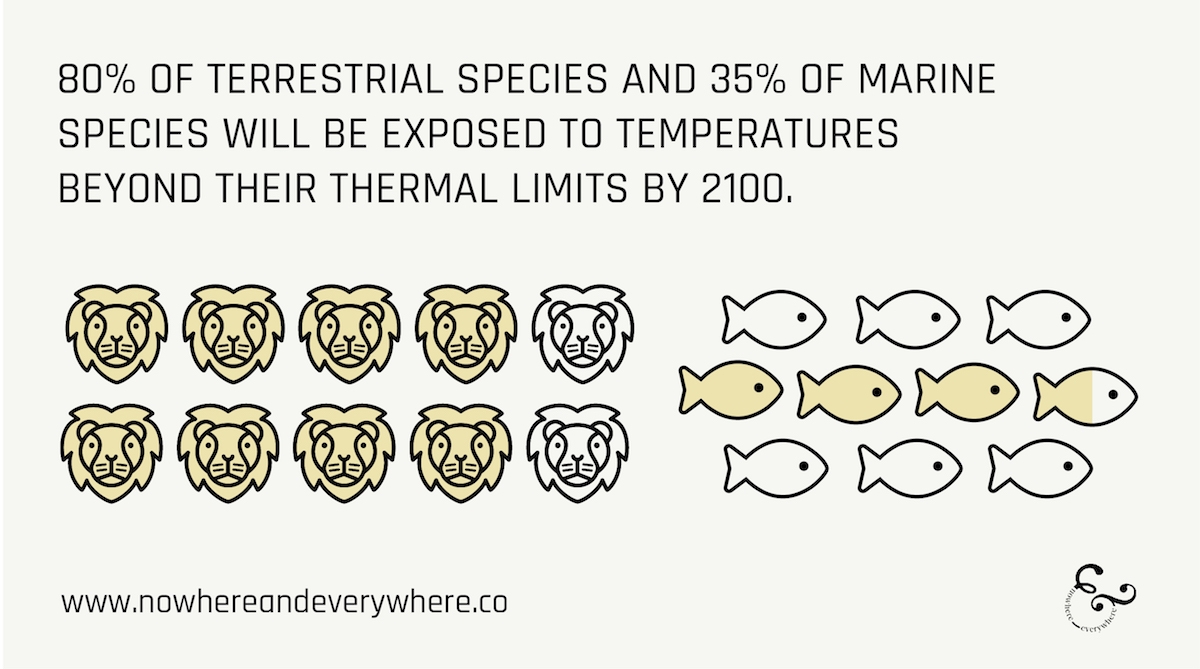
What is projected to happen under climate change?
Not only are countries way off track to achieve the commitments they made to meet the goals of the 2015 Paris Climate Agreement, these commitments were insufficient to limit global heating to 1.5-2 degrees from the outset. Even if all countries meet their pledged emissions reduction targets, global heating is expected to surpass 3.2 degrees (celcius) above pre-industrial levels. This is bad news for biodiversity.
“Anything more than 1.5°C and this becomes a planet that’s very hard to manage biologically because ecosystems literally will be coming apart.” – Thomas Lovejoy, Senior Fellow at the United Nations Foundation
One study that analyzed the local extinctions (not completely lost forever, but lost from a certain area of their range) of almost 1,000 plant and animal species over the 20th century, determined that climate change played a role in 47% of them. In 2016, the Bramble Cays melomys became the first mammal reported (there could be many more that we aren’t aware of) to have gone extinct as a direct consequence of climate-change related sea-level rise. The same fate directly threatens at least 305 terrestrial plant and animal species from Pacific Island nations.
Apart from loss of habitat from sea-level rise, climate change directly threatens biodiversity in a number of ways.
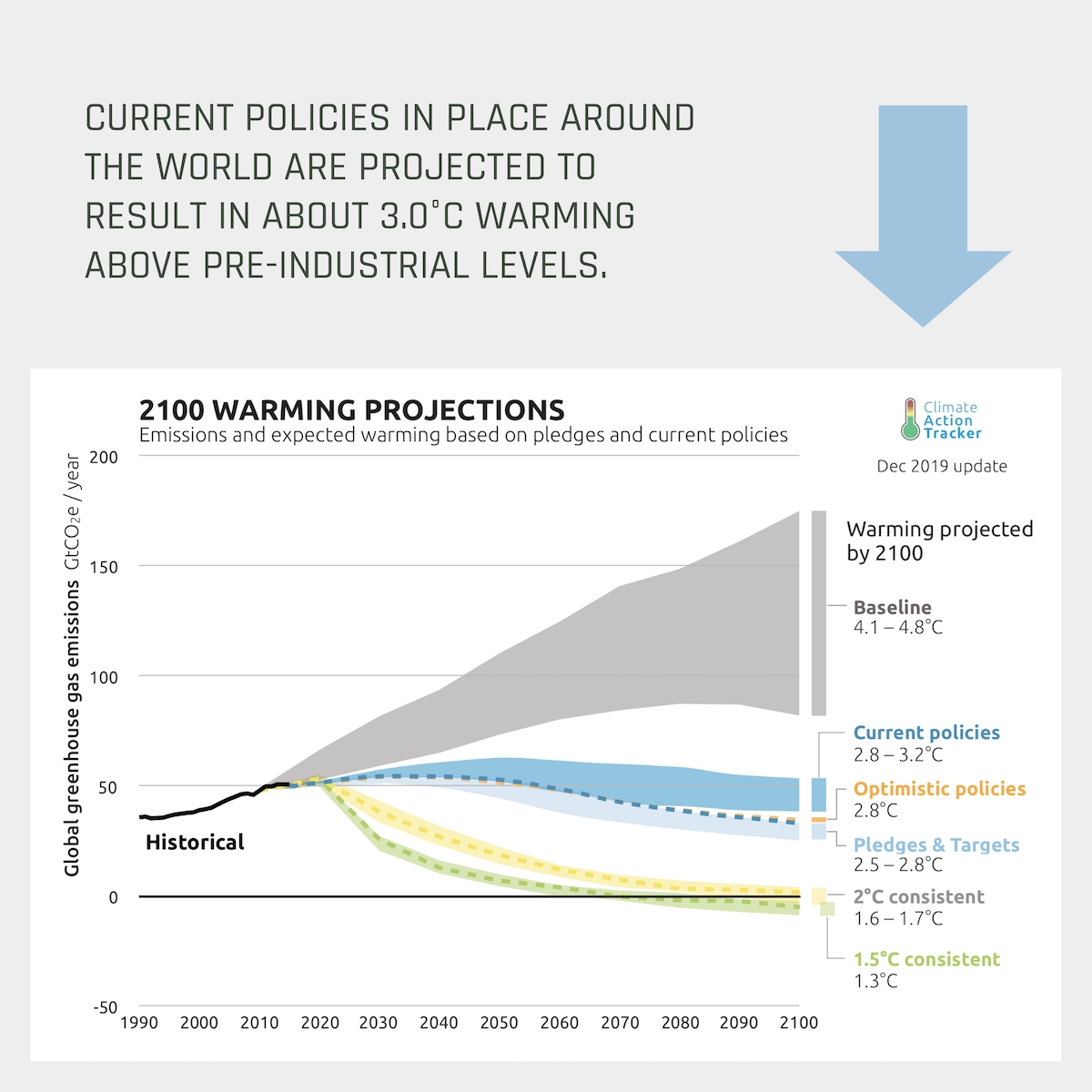
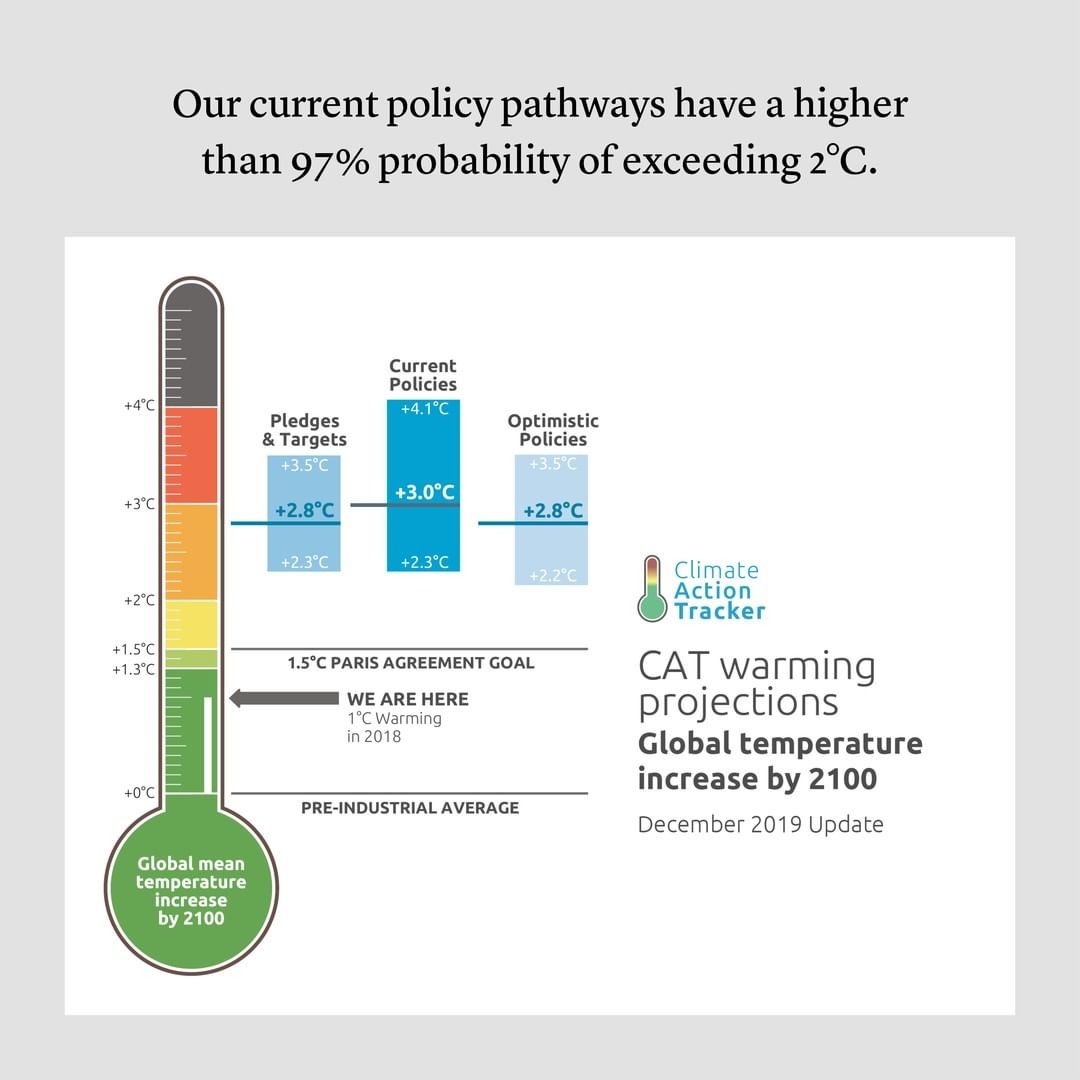
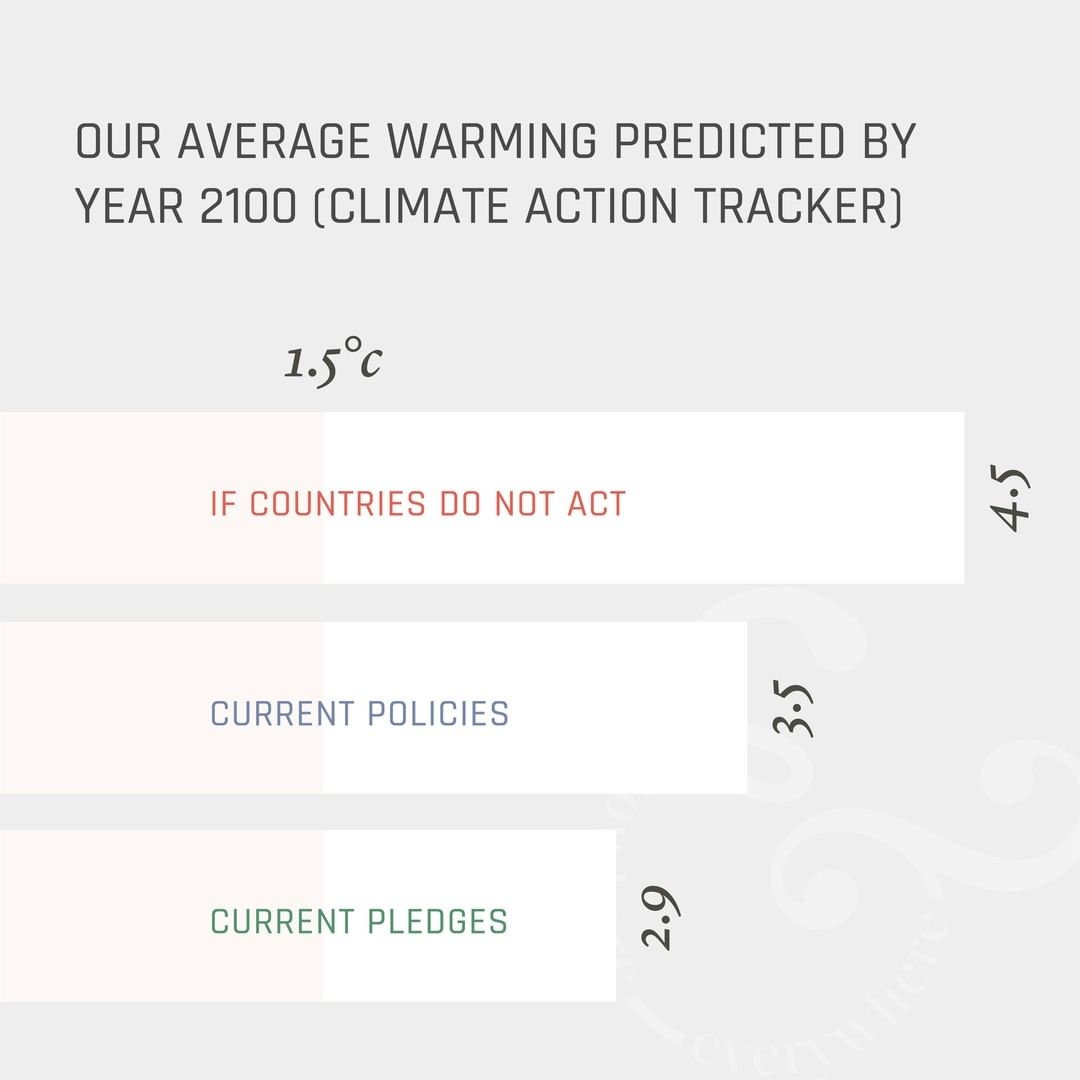
1. Temperature and changes in weather and rainfall patterns
Ecosystem Regime Shift: A regime shift is a transformation of an ecosystem from one form to another as a result of a disturbance. The Stockholm Centre for Resilience likens an ecosystem regime shift to a stock market collapse: It is large, abrupt and has cascading, long-lasting impacts on businesses, families and individuals. However, where stock markets are able to bounce back (from government bailouts), ecosystem regime shifts cause long-lasting, and often irreversible changes to the ecosystem.
The most recent projections released by the Intergovernmental Panel on Climate Change (IPCC) in 2018 predict that 4% of the global terrestrial land area is projected to undergo a transformation of ecosystems from one type to another (regime shift) at 1 degrees of warming. This area effectively doubles to 13% at 2 degrees of warming. An example of a regime shift is the conversion of a forest to grasslands due to changes in precipitation, temperature and humidity. Further declines in rainfall can mean this grassland will turn into a shrub-dominated dryland ecosystem, with species diversity declining with each shift. Species might adapt and maybe new species can evolve, but not as quickly as these changes are projected to occur.
By 2050, when the climate has warmed by 1.5 degrees, the total abundance of trees and animals in tropical rainforests is projected to decrease by 20%. Under warming of 3 degrees (projected to occur by the end of the century), up to 40% of tropical rainforest will be replaced by savanna and grasslands in Central America.
2. More extreme weather events such as heatwaves, bushfires and storms
Extreme weather events are considered ‘press disturbances’ and if they increase in frequency, they will undermine the resilience of ecosystems to bounce back.
For example, bushfires: The 2019/20 catastrophic fire season in Australia burned through an area the size of England, which ecologists have estimated killed or displaced 3 billion reptiles, mammals, frogs and birds (not including plants).
Under climate change, wildfires will occur more frequently, will burn hotter and will burn larger areas of land. In 2020 we’re seeing some of the largest Californian wildfires in recorded history. According to the most recent IPCC projections, fire frequency could increase over 37.8% of the global land area at 1.2 degrees of warming (celsius). In the latter half of the century, where current emissions trajectories will result in 3.5 degrees of warming, over 61.9% of global land area will experience increasing fire frequency.
3. Changing ocean currents, and nutrient cycles due to reduced mixing between surface and deep ocean water
Changing ocean currents and nutrients will affect the distribution of organisms throughout areas of the ocean, allowing some species to become invasive. The strengthening of the East Australian Current has allowed sea urchins to reach Tasmania, where they have decimated kelp forests already stressed by marine heatwaves. This will also impact the migration of fish and coral larvae and the growth of phytoplankton, resulting in a restructuring of global food webs and areas of high biodiversity.
4. Ocean acidification
The ocean is becoming more acidic at a rate unprecedented in the last 65 million years. This has widespread implications for organisms that make their shells out of calcium carbonate including countless species of phytoplankton, zooplankton like krill, molluscs and coral. The shell dissolution of small zooplankton has increased up to 25% since the early 1800s. These shells make up their protective exoskeleton and if they aren’t able to maintain it, they won’t survive.
This will have cascading impacts across marine food-chains, most notably in Antarctica where thousands of animals migrate every summer to feast upon booming krill populations (our beautiful friends the humpback whales might now be safe from direct exploitation, but face an uncertain future as their food source dies out).
5. Deoxygenation of ocean and freshwater ecosystems
Oxygen is less able to dissolve in warmer waters which will result in large swathes of aquatic areas that are unable to support life (apart from algae and bacteria).
6. Direct loss of vital habitat
Polar sea-ice: Ice free summers in the Arctic are projected to increase tenfold, from one per century at 1.5 degrees warming, to one per decade at 2 degrees warming.
Coral reefs: Coral reefs are projected to decline by a further 70-90% at 1.5 degrees, and over 99% at 2 degrees. Coral reefs take up less than 1/10th of 1 percent (that’s tiny!) of the ocean floor but supply 25% of all ocean species with food and shelter.
These two ecosystems can be described as ‘biodiversity hotspots’ – Earth’s most biologically rich, yet threatened regions. Not only do they directly support millions of diverse species, they indirectly support entire food chains and migratory species from across the globe. Their loss will be devastating.
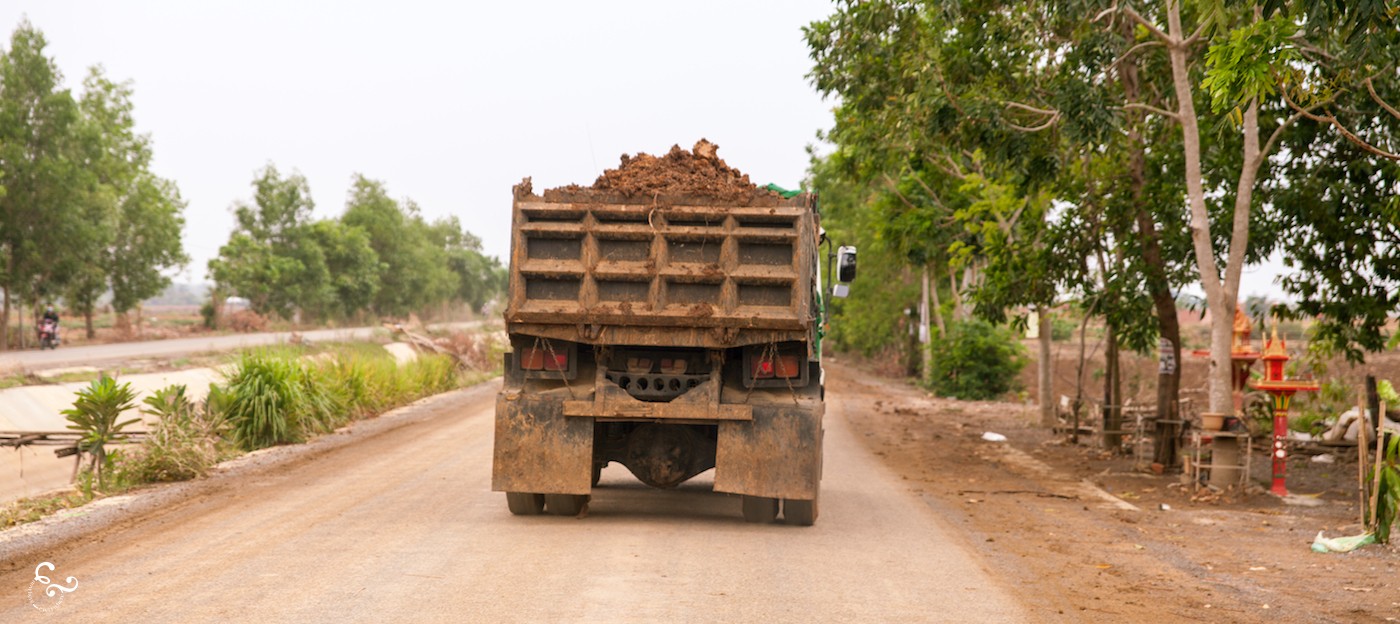
The importance of biodiversity to climate mitigation and adaptation
“The destruction of nature accounts for more global emissions than the cars and trucks in the world.” – Harrison Ford
Ecosystems such as forests, mangroves, seagrass and wetlands absorb and store large volumes of carbon dioxide from the atmosphere, and are known as carbon ‘sinks’.
Intact natural landscapes on land also lower the temperature of their surroundings, providing shade and cooler temperature refuges for wildlife. They also allow many species to adapt to the rapidly changing climate by providing the room needed for species to move and respond to changing local conditions.
Degrading and clearing these landscapes for development results in the loss of habitat, as well as the release of their carbon stores, that in some instances, have been accumulating for centuries. This is why restoring and preserving natural ecosystems is being called a ‘climate solution’.
Protecting these ecosystems ensures that they retain their carbon stores and restoring or rehabilitating degraded ecosystems enhances their ability to absorb more carbon.
Reducing land degradation and restoring global forests, wetlands, grassland and croplands not only reduces the amount of greenhouse gases released into the atmosphere, but actually removes and stores it. Scientists estimate that these ‘nature-based solutions’ could provide more than one third of the most cost-effective greenhouse gas mitigation activities required to keep global warming below 2°C.
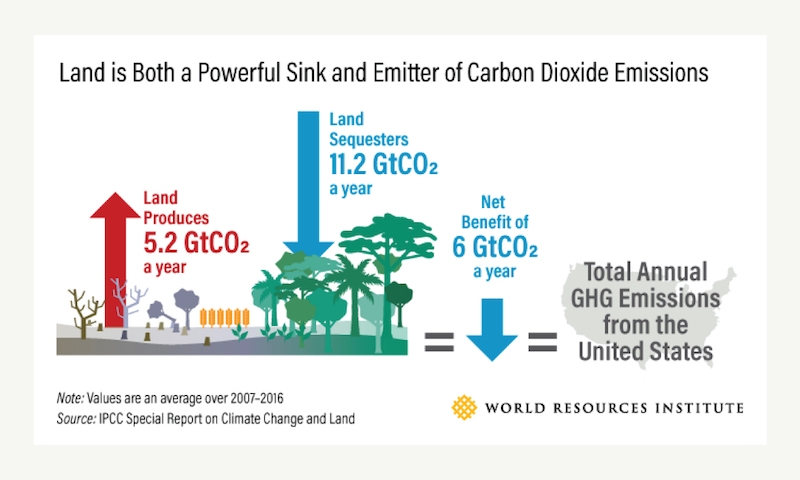
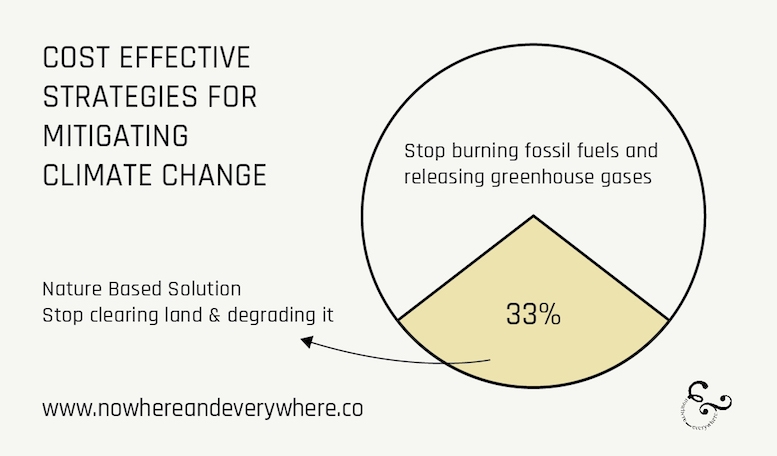
EXTRA READING
Check out our guide about climate change
Dig into climate change, how we got here, the exact causes, what’s happening with the oceans, what we’re doing and not doing about it, and the things we’re keeping an eye on and measuring.


